Sep 24, 2010
EPA Rules Threaten The Economy
By Senator James Inhofe, The Hill
On Labor Day in Milwaukee, President Obama vowed to “keep fighting every single day, every single hour, every single minute, to turn this economy around and put people back to work and renew the American Dream.” Stirring rhetoric, no doubt; but to the employees at Thilmany Papers, a company that employs 850 people in two specialty paper mills in Wisconsin, it means little.
That’s because the Obama Environmental Protection Agency is threatening their livelihoods. The threat comes from EPA’s proposal to regulate industrial boilers, the Boiler MACT rule. As with most EPA rules, the Boiler MACT (maximum achievable control technology standards) sounds arcane, and seems to be the remote province of federal technocrats. This is certainly true, but its impact will be pervasive and damaging. Here’s what Thilmany had to say about it: “Our business, like many others, encounters many challenges. However, none threaten the continued existence of our business like this [proposed rule].”
The United Steelworkers (USW) union emphatically opposes the Boiler MACT proposal. As the USW sees it, the proposal “will be sufficient to imperil the operating status of many industrial plants.” The USW represents hundreds of thousands of workers, “in the most heavily impacted industries, among them pulp & paper, steel, and rubber.” In the union’s view, “Tens of thousands of these jobs will be imperiled. In addition, many more tens of thousands of jobs in the supply chains and in the communities where these plants are located also will be at risk.”
The Industrial Energy Consumers of America (IECA), which represents major manufacturers with more than 750,000 employees, couldn’t have been more adamant: “We cannot emphasize more forcefully the need to the EPA to completely rethink this rule.” That’s because IECA’s member companies “are enormously concerned that the high costs of this proposed rule will leave companies no recourse but to shut down the entire facility, not just the boiler.”
It would be one thing if the Boiler MACT were an isolated instance of a flawed policy. But this flawed policy is part of a larger Obama EPA agenda to set industrial policy for the nation. EPA’s industrial policy should frighten those who hold jobs in factories across America - indeed, for those who aspire to live the American dream. For EPA’s policy sees a growing, thriving, job-creating manufacturing sector as incompatible with its unique brand of environmentalism.
The most prominent manifestation of EPA’s anti-industrial policy is the agency’s pending regulation of greenhouse gases under the Clean Air Act. EPA’s rules will extend the federal bureaucracy into every corner of American life. The Small Business and Entrepreneurship Council believes EPA’s global warming regulations will cause “a cessation of expansion, hiring, investment, construction and new business start-up activity.” EPA’s new rules will require, among many other things, businesses of all kinds - from cement and steel plants to auto parts manufacturers to Wal-Marts - to obtain from EPA costly and time-consuming permits for construction and expansion.
On top of this, EPA is planning to revise the current ozone standard under the Clean Air Act. This standard was lowered during the Bush administration in 2008 - yet apparently not far enough for Obama’s EPA. Despite the fact that no new compelling public health studies have emerged to justify a lower standard, the Obama EPA supports ozone levels approaching, in some areas, what’s present in the air naturally, absent any human contribution.
EPA’s expected new ozone standard will mar several hundred counties across the country with a scarlet “non-attainment” designation. This means more than just failing to meet the new standard: Such a designation severely constrains the ability of local communities to expand and create jobs.
EPA estimates the new ozone standard could cost the economy as much as $90 billion. Unions for Jobs and the Environment, a coalition of unions that includes, among others, the AFL-CIO, the Teamsters, the IBEW and the United Mine Workers, says the potential new standards “will lead to significant jobs losses across the country.”
President Obama speaks grandiosely about restoring the American dream. Yet, all the while, his EPA churns out rules that will crush America’s industries and the manufacturing jobs they support. It’s time to stop EPA’s impending nightmare of shuttered factories and tradesmen with pink slips. And it’s time to restore the appropriate balance between environmental protection and economic growth. See op ed here.
Sen. Inhofe is ranking Republican on the Senate Environment and Public Works Committee.
Sep 22, 2010
Unsustainable cow manure
By Paul Driessen
Seek a sustainable future! Wind, solar and biofuels will ensure an eco-friendly, climate-protecting, planet-saving, sustainable inheritance for our children. Or so we are told by activists and politicians intent on enacting new renewable energy standards, mandates and subsidies during a lame duck session. It may be useful to address some basic issues, before going further down the road to Renewable Utopia.
First, when exactly is something not sustainable? When known deposits (proven reserves) may be depleted in ten years? 50? 100? What if looming depletion results from government policies that forbid access to lands that might contain new deposits - as with US onshore and offshore prospects for oil, gas, coal, uranium, rare earth minerals and other vital resources?
Rising prices, new theories about mineral formation, and improved discovery and extraction technologies and techniques typically expand energy and mineral reserves - postponing depletion by years or decades, as in the case of oil and natural gas. But legislation, regulation, taxation and litigation prevent these processes from working properly, hasten depletion, and make “sustainability” an even more politicized, manipulated and meaningless concept.
Second, should the quest for mandated “sustainable” technologies be based on real, immediate threats - or will imaginary or exaggerated crises suffice? Dangerous manmade global cooling morphed into dangerous manmade global warming, then into “global climate disruption” - driven by computer models and disaster scenarios, doctored temperature data, manipulated peer reviews, and bogus claims about melting glaciers and rising sea levels. Shouldn’t policies that replace reliable, affordable energy with expensive, intermittent, land-intensive, subsidized sources be based on solid, replicable science?
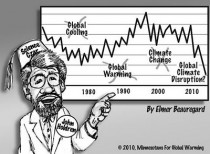
Enlarged here.
Third, shouldn’t inconvenient sustainability issues be resolved before we proceed any further, by applying the same guidelines to renewable energy as courts, regulators and eco-activists apply to petroleum?
Most oil, gas, coal and uranium operations impact limited acreage for limited times - and affected areas must be restored to natural conditions when production ends. Effects on air and water quality, habitats and protected species are addressed through regulations, lease restrictions and fines. The operations generate vast amounts of affordable, reliable energy from relatively small tracts of land, and substantial revenues.
Wind turbines generate small amounts of expensive, unreliable electricity from gargantuan installations on thousands of acres. Turbines and their associated transmission lines dominate scenic vistas, disrupt habitats and migratory routes, affect water drainage patterns, impede crop dusting and other activities, and kill bats, raptors and other birds, including endangered species that would bring major fines if the corporate killers were oil or mining companies. And yet, wind operators receive exemptions from environmental review, biodiversity and endangered species laws that traditional energy companies must follow - on the ground that such rules would raise costs and delay construction of “eco-friendly” projects.
Kentucky’s Cardinal coal mine alone produces 75% of the Btu energy generated by all the wind turbines and solar panels in the USA, Power Hungry author Robert Bryce calculates. Unspoiled vistas, rural and maritime tranquility, and bald eagles will all be endangered if 20% wind power mandates are enacted.
The Palo Verde Nuclear Power Station near Phoenix generates nearly 900 times more electricity than Nevada’s Nellis Air Force Base photovoltaic panels, on less land, for 1/15 the cost per kWh - and does it 90% of the time, versus 30% of the time for the Nellis array. Generating Palo Verde’s electrical output via Nellis technology would require solar arrays across an area ten times larger than Washington, DC.
Building enough photovoltaic arrays to power greater Los Angeles would mean blanketing thousands of square miles of desert habitat. Once built, solar and wind systems will be there just this side of forever, since there will be no energy production if we let them decay, after shutting down whatever hydrocarbon operations aren’t needed to fuel backup generators that keep wind and solar facilities operational.
Wind and solar power also mean there is a sudden demand for tons of rare earth elements that weren’t terribly important a decade ago. They exist in very low concentrations, require mining and milling massive amounts of rock and ore to get the needed minerals, and thus impose huge ecological impacts.
If mountaintop removal to extract high quality coal at reduced risk to miners is unacceptable and unsustainable - how is it eco-friendly and sustainable to clear-cut mountain vistas for wind turbines? Blanket thousands of square miles with habitat-suffocating solar panels? Or remove mountains of rock to mine low-grade rare earth mineral deposits for solar panel films, hybrid batteries and turbine magnets?
Since any undiscovered US rare earth deposits are likely locked up in wilderness and other restricted land use areas, virtually no exploration or development will take place here. We will thus be dependent on foreign suppliers, like China, which are using them in their own manufacturing operations - and selling us finished wind turbines, solar panels and hybrid car batteries. The United States will thus be dependent on foreign suppliers for renewable energy, just as we rely on foreign countries for oil and uranium.
To claim any of this is ecologically or economically sustainable strains credulity.
Green jobs will mostly be overseas, subsidized by US tax and energy dollars - other people’s money (OPM). Indeed, Americans have already spent over $20 billion in stimulus money on “green” energy projects. However, 80% of the funding for some of them went to China, India, South Korea and Spain, and three-fourth of the turbines for eleven US wind projects were made overseas. This is intolerable, indefensible and unsustainable. But it gets worse.
Denver’s Nature and Science Museum used $720,000 in stimulus money to install photovoltaic panels and reduce its electricity bills by 20 percent. The panels may last 25 years, whereas it will take 110 years to save enough on those bills to pay for the panels - and by then four more sets of panels will be needed.
As to biofuels, the US Navy recently waxed ecstatic over its success with camellia-based eco-fuel in fighter jets. But the PC biofuel costs $67.50 per gallon, versus $5.00 per gallon for commercial jet fuel.
To meet the 36-billion-gallons-a-year-by-2022 federal ethanol diktat, we would have to grow corn on cropland and wildlife habitat the size of Georgia, to get 15 billion gallons of corn-based ethanol - plus switchgrass on farmlands and habitats the size of South Carolina, to produce 21 billion gallons of “advanced biofuel.” By contrast, we could produce 670 billion gallons of oil from frozen tundra equal to 1/20 of Washington, DC, if the Arctic National Wildlife Refuge weren’t off limits.
OPM-subsidized ethanol also means a few corn growers and ethanol refiners make hefty profits. But chicken and beef producers, manufacturers that need corn syrup, and families of all stripes get pounded by soaring costs, to generate a fuel that gets one-third less mileage per tank than gasoline.
Hydrocarbons fueled the most amazing and sustained progress in human history. Rejecting further progress - in the name of sustainability or climate protection - requires solid evidence that we face catastrophes if we don’t switch to “sustainable” alternatives. Computer-generated disaster scenarios and bald assertions by Al Gore, Harry Reid, John Holdren and President Obama just don’t make the grade.
We need to improve energy efficiency and conserve resources. Science and technology will continue the great strides we have made in that regard. Politically motivated mandates will impose huge costs for few benefits. Sustainability claims will simply redistribute smaller shares of a shrinking economic pie.
“Renewable” energy subsidies may sustain the jobs of lobbyists, activists, politicians, bureaucrats and politically connected companies. But they will kill millions of other people’s jobs.
Let’s be sure to remind our elected officials of this along their campaign trails - and on November 2. PDF
Paul Driessen is senior policy advisor for the Committee For A Constructive Tomorrow and Congress of Racial Equality, and author of Eco-Imperialism: Green power - Black death.
Sep 15, 2010
Five Reasons Why Water Vapor Feedback Might Not Be Positive
By Roy W. Spencer, Ph. D.
Since it has been a while since I have addressed water vapor feedback, and I am now getting more questions about it, I thought this would be a good time to revisit the issue and my opinions on the subject.
Positive water vapor feedback is probably the most “certain” and important of the feedbacks in the climate system in the minds of mainstream climate researchers. Weak warming caused by more carbon dioxide will lead to more water vapor in the atmosphere, which will then amplify the weak warming through water vapor’s role as the atmosphere’s primary greenhouse gas.
Positive water vapor feedback makes sense intuitively. Warmer air masses, on average, contain more water vapor. Warmer air is associated with greater surface evaporation rates, which is the ultimate source of almost all atmospheric water vapor.
And since water vapor is the atmosphere’s main greenhouse gas, most scientists have reasonably inferred that climate warming will be enhanced by increasing water vapor amounts. After all, water vapor feedback is positive in all of the IPCC climate models, too.
But when one looks at the details objectively, it is not so obvious that water vapor feedback in the context of long-term climate change is positive. Remember, it’s not the difference between warmer tropical air masses and cooler high-latitude air masses that will determine water vapor feedback...its how those air masses will each change over time in response to more carbon dioxide. Anything that alters precipitation processes during that process can cause either positive or negative water vapor feedback.
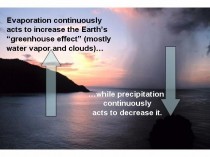
Enlarged here.
Here are some of those details.
1) Evaporation versus Precipitation
The average amount of water vapor in the atmosphere represents a balance between two competing processes: (1) surface evaporation (the source), and (2) precipitation (the sink). While we know that evaporation increases with temperature, we don’t know very much about how the efficiency of precipitation systems changes with temperature.
The latter process is much more complex than surface evaporation (see Renno et al., 1994), and it is not at all clear that climate models behave realistically in this regard. In fact, the models just “punt” on this issue because our understanding of precipitation systems is just not good enough to put something explicit into the models.
Even cloud resolving models, which can grow individual clouds, have gross approximations and assumptions regarding the precipitation formation process.
2) Negative Water vapor Feedback Can Occur Even with a Water Vapor Increase
Most atmospheric water vapor resides in the lowest levels, in the ‘turbulent boundary layer’, while the water vapor content of the free troposphere is more closely tied to precipitation processes. But because the outgoing longwave radiation is so much more sensitive to small changes in upper-layer humidity especially at low humidities (e.g. see Spencer & Braswell, 1997), it is possible to have a net increase in total integrated water vapor, but negative water vapor feedback from a small decrease in free-tropospheric humidity. See #4 (below) for observational support for this possibility.
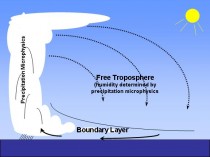
Enlarged here.
3) Cause Versus Effect
Just because we find that unusually warm years have more water vapor in both the boundary layer and free troposphere does not mean that the warming caused the moistening.
There are a variety of processes (e.g. tropospheric wind shear causing changes in precipitation efficiency) which can in turn alter the balance between evaporation and precipitation, which will then cause warming or cooling as a RESULT OF the humidity change - rather than the other way around.
This cause-versus-effect issue has been almost totally ignored in feedback studies, and is analogous to the situation when estimating cloud feedbacks, the subject of our most recent paper.
Similar to our cloud feedback paper, evidence of causation in the opposite direction is the de-correlation between temperature and humidity in the real world versus in climate models (e.g. Sun et al., 2001).
4) Evidence from Radiosondes
There is some evidence that free tropospheric vapor has decreased in recent decades (e.g. the Paltridge et al., 2009 analysis of the NCEP Reanalysis dataset) despite this being a period of surface warming and humidifying in the boundary layer. Miskolczi (2010) used the radiosonde data which provide the main input to the NCEP reanalysis to show that the resulting cooling effect of a decrease in vapor has approximately counterbalanced the warming influence of increasing CO2 over the same period of time, leading to a fairly constant infrared opacity (greenhouse effect).
Of course, water vapor measurements from radiosondes are notoriously unreliable, but one would think that if there was a spurious drying from a humidity sensor problem that it would show up at all altitudes, not just in the free troposphere. The fact that it switches sign right where the turbulent boundary layer pushes up against the free troposphere (around 850 mb, or 5,000 ft.) seems like too much of a coincidence.
5) The Missing “Hot Spot”
Most people don’t realize that the missing tropospheric “hot spot” in satellite temperature trends is potentially related to water vapor feedback. One of the most robust feedback relationships across the IPCC climate models is that those models with the strongest positive water vapor feedback have the strongest negative lapse rate feedback (which is what the “hot spot” would represent). So, the lack of this negative lapse rate feedback signature in the satellite temperature trends could be an indirect indication of little (or even negative) water vapor feedback in nature.
Conclusion
While it seems rather obvious intuitively that a warmer world will have more atmospheric water vapor, and thus positive water vapor feedback, I’ve just listed the first 5 reasons that come to my mind why this might not be the case.
I am not saying that’s what I necessarily believe. I will admit to having waffled on this issue over the years, but that’s because there is evidence on both sides of the debate.
At a minimum, I believe the water vapor feedback issue is more complicated than most mainstream researchers think it is. See post here.
Sep 13, 2010
GISS On Track For Hottest Year Ever
By Steve Goddard
It appears almost certain that GISS will declare 2010 to be the hottest year ever (below, enlarged here).
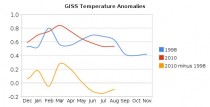
It is also almost certain that UAH, RSS and HadCrut will not agree with GISS. They will most likely place 2010 below 1998 (below, enlarged here).

Dr Hansen has recognized the discrepancy, and explains it by his “better Arctic coverage”
The blink comparator here (still below) shows GISS June-August (baseline 1958-2002) extrapolated (1200 km) vs June-August measured (250 km.) Note the large holes and the fact that there is little or no measured data north of 80N. Also note that GISS shows the region north of 80N as well above normal, despite the paucity of actual temperature data.
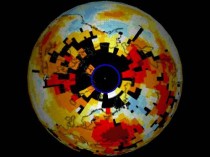
By contrast, DMI has a lot more actual temperature data, and shows June-August 2010 (north of 80N) well below the 1958-2002 mean.
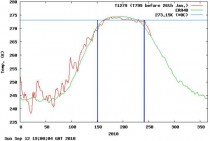
The DMI closeup below (enlarged here) shows 5518 pixels below normal and 1471 pixels above normal from June through August.
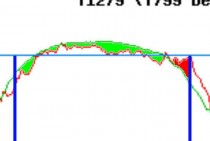
So which temperature record do you trust? Is 2010 really the “hottest year ever?”
See post and comments here. See an earlier post on GISS divergence here. See the divergence of GISS from Hadley CRU Temperatures below, enlarged here.

ICECAP NOTE: The many issues with the surface data set like urbanization unaccounted for, bad siting, inappropriate instrumentation, land use changes, station dropout and a tenfold increase in missing months leaving large holes requiring infilling from as much as 1200km away as in this arctic example, changing ocean measurement methods all induce uncertainty and predominantly warm biases. NASA and NOAA allows these to contaminate (warm) recent decades while applying homogenization and other “adjustments” to cool off the prior warm period further ensuring recent high rankings and greater century trends when raw, rural, well sited data shows little trend or even cooling.
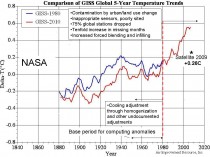
Enlarged here.
Sep 10, 2010
First Look at December to March Global Patterns
By Joseph D’Aleo
Last winter despite a strong El Nino was very cold (all-time coldest in some areas) in many parts of the Northern Hemisphere. A strong La Nina has come on during the summer, a very hot one (all-time in some of the very same areas where the winter was very cold). Other areas had record cool summer. The anomalies were not so much a case of extremes just persistence of the same pattern due to a stuck jet stream configuration.
Persistence is a characteristic of low solar years. The last several years have seen a lot of persistence within seasons. Strong El Ninos and La Ninas also tend to exhibit higher persistence.
What about this winter? Well with a strong La Nina, cold PDO, warm Atlantic (AMO), QBO transitioning to westerly and a still low solar suggests the following.
The 500mb geopotential height anomalies for the globe for December/January:

Enlarged here.
The surface temperature anomalies globally for December/January:
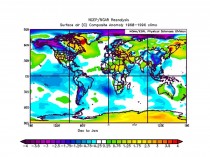
Enlarged here.
The 500 mb geopotential height anomaly for February/March:
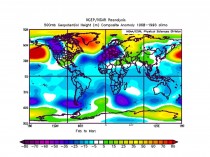
Enlarged here.
The surface temperature anomaly for February/March:
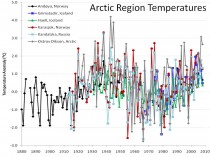
Enlarged here.
The winter (December/January and then February/March) for the United States:
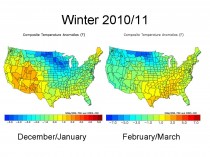
Enlarged here.
For the US, this implies another cold winter for the upper Midwest, probably again heavy snows for the northwest, Rockies, Northern Plains, Midwest and northern New York and New England with ice storm threat(s) further south.
The same for Europe and western Asia:
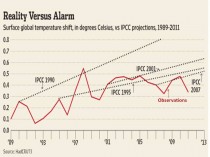
Enlarged here.
This should mean more snow and cold for Great Britain and eventually much of Europe where they are getting used to weather more like the Dalton Minimum with snowy winters and long cold spells.
The winter should start out cold in central and eastern United States, Western Europe and China. A cool summer start seems in the cards for South America. The late winter looks very cold in Europe and western Asia, while the cold retreats west in the United States. Blocking in the Arctic/North Atlantic, last year at a 60 year record level, appears to be again a major factor.
If you ask does this approach work, see how it worked last year when in the fall we predicted this pattern (height anomalies which correspond to surface temperature anomalies) for the winter at 500mb (enlarged here):
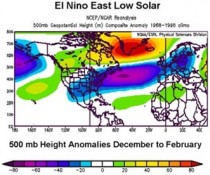
This is what the 500mb anomalies actually looked like (enlarged here):
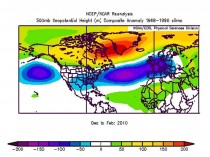
More to come. PDF
See Joe Bastardi’s take on it here. Joe nailed last winters heavy snow and cold in the south up to the Mid-Atlantic.
---------------
Multidecadal Tendencies in ENSO and Global Temperatures Related to Multidecadal Oscillations
Energy & Environment, Volume 21, Numbers 5, pp. 437-460, September 2010, Joseph D’Aleo, Don Easterbrook
Abstract: Perlwitz etal (2009) used computer model suites to contend that the 2008 North American cooling was naturally induced as a result of the continent’s sensitivity to widespread cooling of the tropical (La Nina) and northeastern Pacific sea surface temperatures. But they concluded from their models that warming is likely to resume in coming years and that climate is unlikely to embark upon a prolonged period of cooling. We here show how their models fail to recognize the multidecadal behavior of sea surface temperatures in the Pacific Basin, which determines the frequency of El Ninos and La Ninas and suggests that the cooling will likely continue for several decades. We show how this will be reinforced with multidecadal shift in the Atlantic (and declining solar activity).
See publication here. More to come.
See also Dr. Willie Soon’s Insight on future climate entitled “Hot Air”. He asks is carbon dioxide really the monster driving climate change? If not,
maybe we should prepare for a colder world here.
|




















